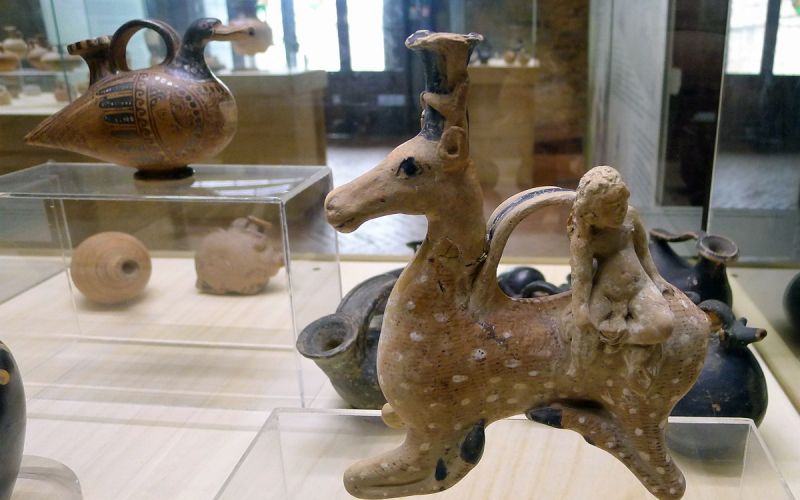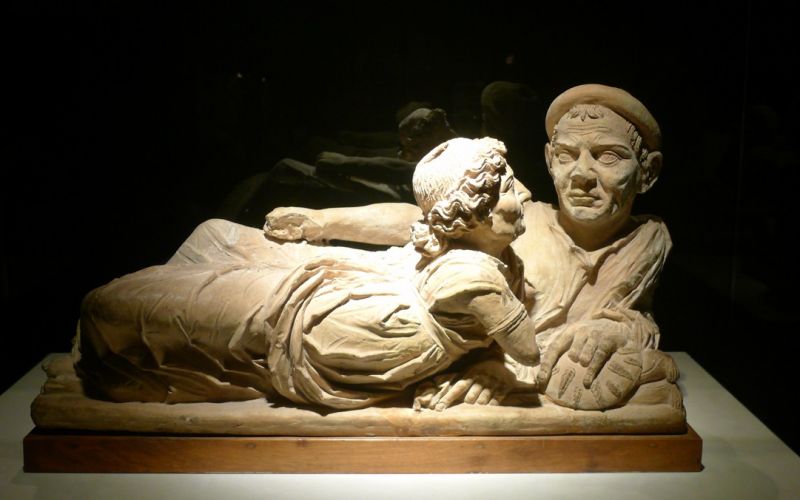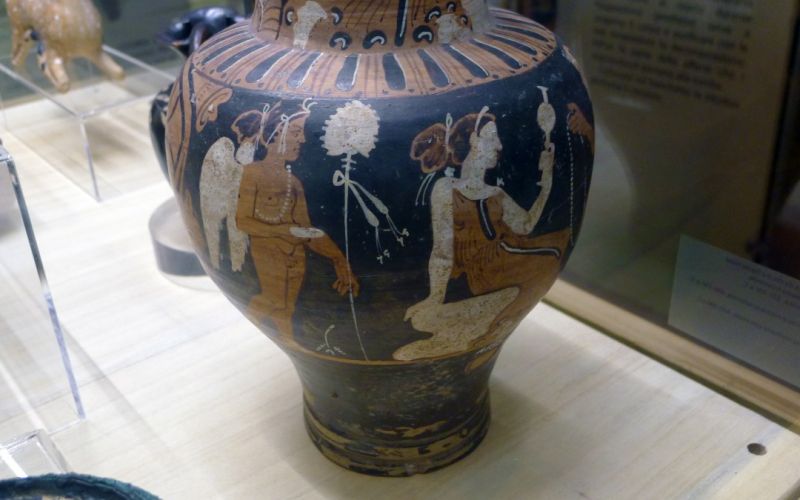Tuscany, ancient homeland of the Etruscans
The Etruscans were called "Tusci" by the Romans, and this is the origin of the word "Tuscany". They formed from the 7th to the 2nd century BC the first great Italian civilization. Agricultural and industrial people, they had developed an important economic activity. Grouped in a confederation of 12 main cities, governed by a king, they granted the women a political role. Many archeological sites and museums, be it in Maremma or Chianti, testify the significance of the Etruscans.
Etruscan civilization has still discussed origins. For some, the Etruscans come from a migration of Asia Minor, for others they come from an indigenous population (the Villanovians). The Etruscan language is also still a mystery. It does not look like any known idiom. The Etruscans fought a great deal against the Romans, as evidenced by numerous writings by Roman historians, and the Etruscan civilization declined as Rome became more and more powerful. Etruscans were farmers , growing wheat and producing wine (which they exported) but having also developed industry and working the iron ores found in the region. Etruscan art, influenced by Greek art, led to the production of objects (jewelry, pottery, and statues) and paintings of great beauty, also exported. Trade was therefore a fundamental economic activity of Etruscan civilization.
The Etruscans had created a confederation of 12 cities, surrounded by powerful stone walls, as can be seen in Volterra, near Vecchienna. Each city was headed by a family, a clan chief, the “lucumon”. Water supply, sewers, central heating count among the many Etruscan inventions, later taken over by the Romans.
The Etruscan society was very original. Aristocratic families hold power, and slaves formed an important part of the population. In the 6th century BC, a free middle class of artisans and small traders developed. Women were of great importance both politically and administratively, and live a family and social life where their role was paramount. Dressed with all their jewels and alongside their husbands, they participate in banquets, engage in physical exercises and attend games involving naked athletes. They may also own property in their own name, manage their homes, their properties and trade. The funeral urns, where husband and wife are often lying on the top, attest this importance.
There are many places in Tuscany to discover Etruscan civilization. At 10 minutes from Vecchienna in Maremma, in Sasso Pisano, there is the Etrusco Roman archaeological site of Bagnone: the thermal baths already used hot springs. At 35 minutes from Vecchienna, the park of Populonia, between the promontory of Piombino and the Gulf of Baratti, covers 80 hectares. It is a true open-air museum and includes a significant part of the ancient city of Populonia, a unique Etruscan colony built directly on the sea, with its necropolises, quarries of calcarenite and areas to work the iron from the island of Elba. Volterra, where is one of the most beautiful Etruscan museums, is also close to Vecchienna and Villa le Barone. And in Castellina in Chianti you can also visit Etruscan museum and tombs! Tuscany is really the place to discover Etruscan civilization!














